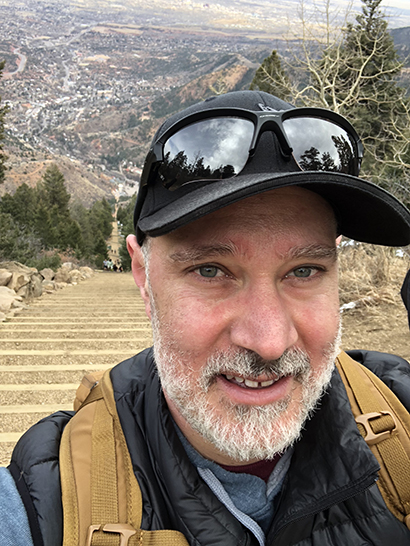
Who is responsible when a rigging accident happens? I see this question over and over again. Too often these days. There are few absolutes in life. Jokingly, taxes, and not so funny… gravity. Even with the best-laid plans of mice and men, gravity and physics will soon find you out. On that occasion when an accident happens, who is to blame?
We are very quick to blame everyone, from the rigger to the tech to the building. To borrow a phrase coined by my favorite designer, Butch Allen, it’s “the Blame Funnel.” And in my opinion, it looks like this:
1. The Manufacturer
The manufacturer is ultimately responsible for the design of not only the product, but the safe working procedures of that product. How it’s wired, signal flow, safeties, and yes, even rigging. There should be clear-cut methods that are implemented so that the technician is always installing the product (whichever product that is) by the manufacturer’s intended use for that product. After all, they do the testing, they know the limitations, and they engineered and designed the product. What if you need to go beyond the limitations? Simple, ask the manufacturer and get them to endorse it first. In writing.
2. The Vendor
Okay, you want to own gear?! Great. You got a loan, bought a ton of P.A. or video or lighting, and you are now an entertainment vendor! Congrats… Now you need to package it and train your technicians how to install it. That’s right, train your technicians! There are freelance technicians and vendor employees. All should be properly trained by the vendor to install the product by the manufacturer’s designed methods. Why? As a vendor, would you ever assume that your technicians “just know” what they are doing? Present that argument to your insurance company and see how long your liability coverage lasts. The best vendors in the world have intensive multi-week training programs. They make sure their technicians are trained not only with how the product works and is assembled, but why. And they update that training. You don’t need to become an engineer, but you need to have a layman’s understanding of physics — whether it be gravity or signal flow.
3. The Technician
You remember when you picked up your first guitar or went to your first concert and got to see your favorite band onstage and thought, “Yeah, man, I wanna do that!” Well, man, you fell a little short, and the next best thing was to work for your favorite band. And then a not-so-favorite band, and then a not-so-favorite corporate company for their shareholder meeting. And here you are! Tech’ing and hanging gear. But do you know what you’re doing? It’s your responsibility as the technician to make sure you are competent and confident at what your job pertains to. The whole fake-it-til-you-make-it argument doesn’t hold water anymore, buddy. You’re in the big leagues and need to act like it. Ask the vendor to train you. If they won’t, go work for someone who will. Remember, the best vendors train their technicians. If you don’t know what you are doing, tell someone. Your crew chief, your fellow technician, your stage manager, your production manager! Don’t be afraid to ask for help. No one wants to see you fail. If you fail, the whole production fails.
4. The Production Manager
When on the show site, it’s your baby. You’re the boss the big kahuna, the grand fromage…You are the wizard, and you know the ins and outs of your show. You have safety procedures in place for your team. You hired your vendors, created the rider, received a copy of the flame certs, have the motor certs, have the power sorted. You made sure the liability insurance and workers comp is filed with the business agent. And you have vetted and made sure the team you have hired is competent and qualified. You may or may not be on the floor the whole day, but you make the schedule and it’s your responsibility to make sure it’s adhered to. You set the temperament and flow for the whole team. If an accident happens — it’s on your watch. That’s why you hire trained professionals, to eliminate accidents that could have been avoided.
5. The Rigger
Now I’m sure you are scratching your heads, wondering why this guy wasn’t at the top of the blame funnel! After all, he was there before everyone else and he’s been on everyone’s case all morning about how to do things. Well, that’s because not many in this industry understand what the rigger does. Not even all riggers fully understand their role. First and foremost, the rigger makes sure the “rig” is hung as close to the way it was designed as possible, as safely and efficiently as possible. The rigger is not an engineer. The rigger did not design your product, nor is he responsible for your training and installation of your product. Why? Because it’s not his product, he’s a rigger. The rigger is responsible for getting the motors in the right spot. The best riggers are part of the safety plan, the fall rescue plan; and even the best of the best do safety checks. Make sure the safeties are on, the half couplers are tight, the rigging is hung correctly (no fouled shackles and the GAC flex is installed correctly, etc.). He may even go up to grid and look for himself. His role is an overseer of the total rig. He knows the building, he’s spoken to the engineer, and he’s done the drawings and made the adjustments to keep continuity with the design. He has spoken to the promoter, production manager and crew chiefs ad nauseam about tolerances and contingencies and weather procedures. A lot of times, but not all, he may even be the safety officer after the rigging is done and load-in has begun. But when someone messes up, he, unfortunately, is the first guy to get the blame, a lot of times even before the facts are known.
But please, my friends, be careful before you blame the rigger. More than likely he has done his job to perfection. He got you your points before coffee, they are straight, and where they need to be. He probably helped you pull a cable out, sorted out your fouled cable slider, and helped you wrap your truss, even though it’s not his gig. If you want to blame someone, please look at the gap between manufacturer/vendor/training. I would venture to guess 90 percent of all accidents are due to lack of knowledge, not gross incompetence.
I am a rigger advocate. They are the first in and the last out. A lot of times, your rigger is the oldest most experienced member of your crew. He may sometimes be a production manager, a stage manager or a technician, be he is always a rigger first. It’s a mindset. It’s a confidence that not all people have. They are always looking at weights, forces, spansets and they are always looking up. But the rigger is just one set of many eyes onsite. He is part of a team of responsible professionals.
Rig Safe!
I hope that you never have to face an accident on your event, and I hope this outline provides you with a list of questions to ask. I hope it gets you talking about safety! Rig safe, my friends.
Clay Hutson, a veteran production manager, stage manager and sound engineer, has supported tours for an array of rock, pop and country acts including Guns N’ Roses, Tim McGraw & Faith Hill, Halsey, Kid Rock and, most recently, Ariana Grande. He can be reached at
clayhutson.com.


